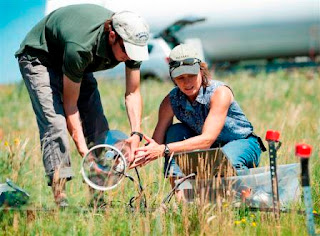Dr. Elise Pendall and her team of UW and CSU researchers publish their findings in Ecology Letters.
Read more from the UW press release: http://www.uwyo.edu/uw/news/2012/11/uw,-csu-research-microbes-accelerate-soil-carbon-loss.html
Journal's website: http://onlinelibrary.wiley.com/doi/10.1111/ele.12034/abstract
To learn more about Dr. Pendall's research and her lab, please visit her website at https://sites.google.com/site/pendalllab/
Read more from the UW press release: http://www.uwyo.edu/uw/news/2012/11/uw,-csu-research-microbes-accelerate-soil-carbon-loss.html
Journal's website: http://onlinelibrary.wiley.com/doi/10.1111/ele.12034/abstract
To learn more about Dr. Pendall's research and her lab, please visit her website at https://sites.google.com/site/pendalllab/










